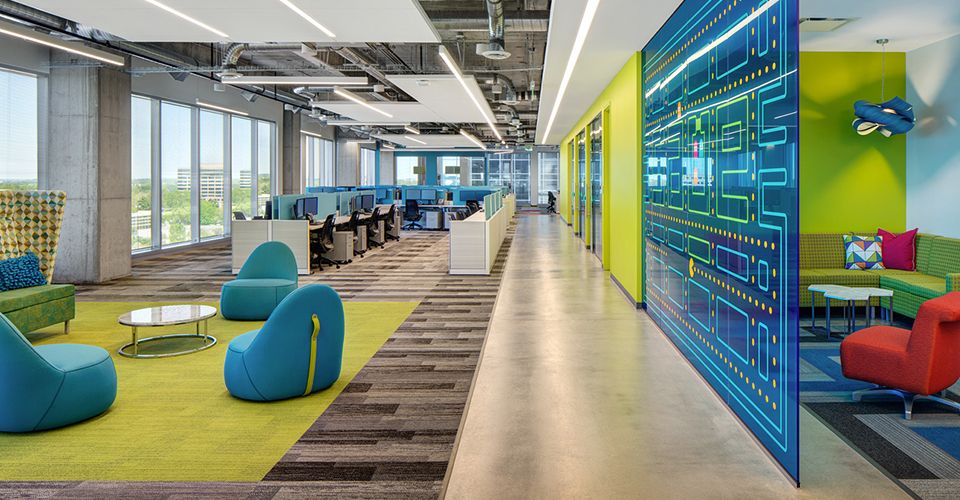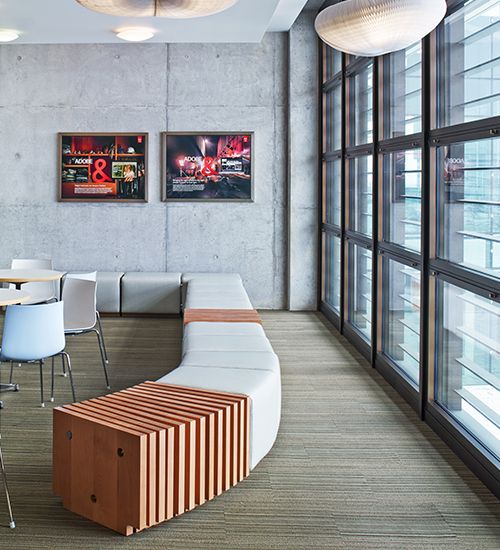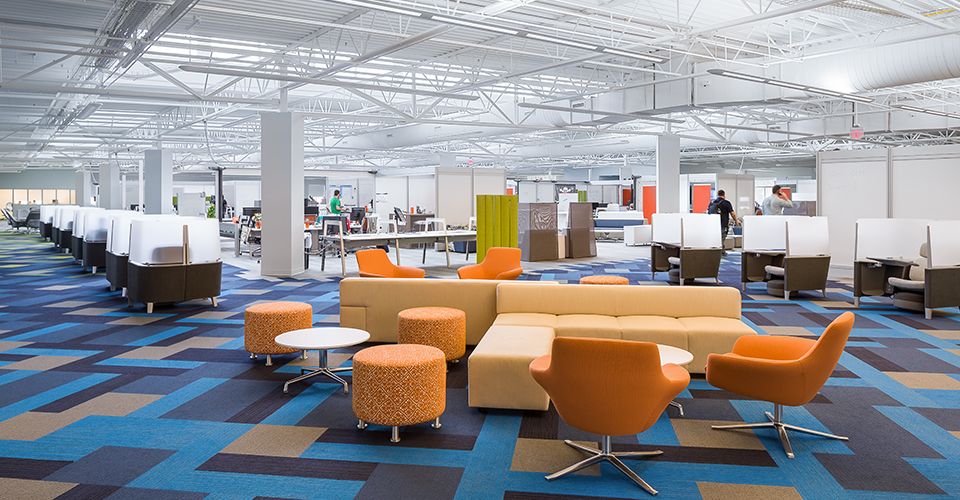There is no question that in the months of prolonged isolation and distancing, we’re starting to feel the desire for social connection. Many of us are itching to go back to the office just to interact with the people we used to see almost every day.
The reality is that we need and want to go back to work, which means buildings need to adjust—and quickly.
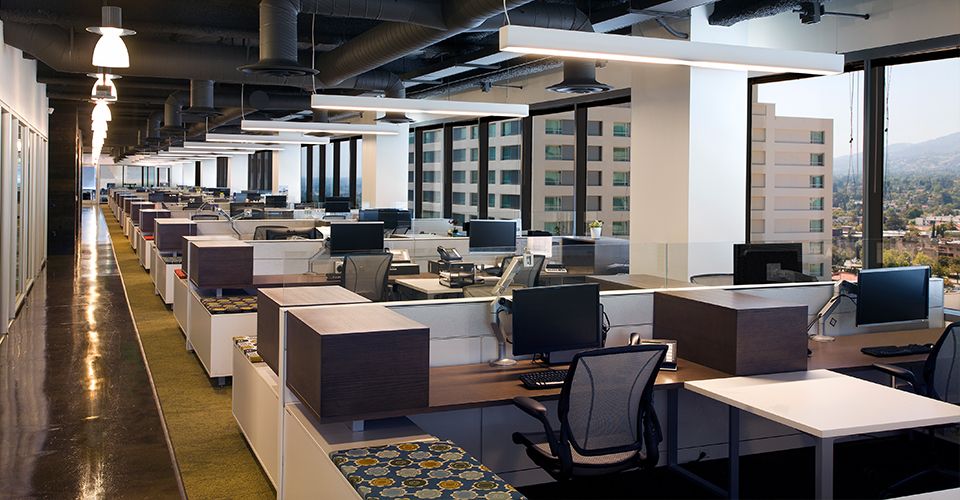
When we do get back to in-office work, our spaces will look different than they were before. © 2013 Y.K. Cheung Photography
But how can we incorporate health and wellbeing? And what is our responsibility to create that sense of physical and psychological safety in the built environment now and into the future?
I’ve said before that designers are the ultimate problem solvers. My prediction is that in response to what’s happening today, we’ll begin to see designers using resiliency as a model for the future built space.
Short-term vs. long-term design strategies
At this moment, organisations are making short-term decisions about their spaces while pushing off the long-term. However, it’s still important for designers to balance both needs, and I think we’ll find that flexible, adaptable solutions will be most successful moving forward.
Flexibility
The first question to ask yourself or your clients should be: “What are your plans for going back to the office?”
Large, open spaces are ripe for rearrangement into more flexible set-ups, especially when there is a clear need for physical distancing between work spaces. ©2016 Darris Lee Harris Photography
Modularity (in furniture, in flooring) allows for flexibility within spaces, which will be key in post-COVID spaces. Photo: Eric Laignel & Weston Colton
Ultimately, there is no one “look” that defines a resilient space. © 2017 Kris Decker & Firewater
Based on a number of factors—budget, location, public health guidelines, business type, work culture, personal comfort levels—coming back into the workplace will look different for each of us. At the same time, our approach to outfitting workspaces and education spaces will need to accommodate the very real possibility of a second wave of COVID-19. So, in our push to “go back” we also must anticipate the need to “pull back.”
In short, nothing is permanent.
Which means that any of-the-moment design solutions within spaces have to be easy, quick, and low-cost. Flexible design strategies could take advantage of modular flooring to make active changes; for example, selectively replacing tiles to facilitate physical distancing or to direct movement. In a phased approach to opening back up, flexibility requires addressing safety alongside functionality
Adaptability
Acknowledging that flexibility is necessary in the short-term, the impact of COVID-19 will require more than that. The changes that we’ll see in terms of design may not emerge for some time and, in many cases, will be unpredictable. Because of this, adaptability will become more important for buildings and the spaces within them.
Adaptability requires the capacity to accommodate substantial change over the lifetime of a building in response to its social, economic, and physical surroundings. Adaptability also responds to the ever-changing needs of building occupants.
In this way, designing adaptable spaces is an exercise that considers the present and the future. Much like nature, spatial design doesn’t have to be perfect, it just needs to be able to change based on new information, i.e. what’s going on in the world and how that affects the people using the space. Staying attuned to these internal and external factors is what adaptability is all about.
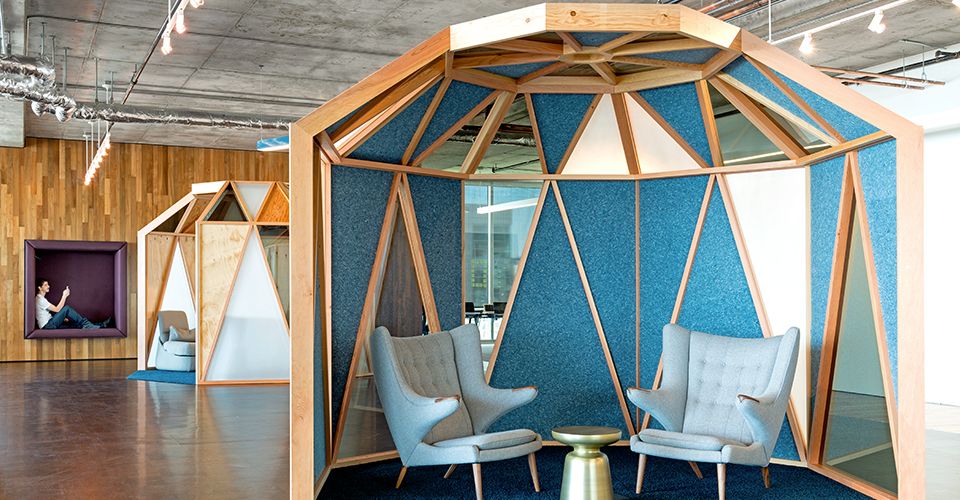
Flexible, semi-permanent spaces not only allow for distancing but also create a sense of psychological safety. © Jasper Sanidad
Moving toward resiliency
Pandemics have always shifted architecture and design; COVID-19 will be no different. It just so happens to be occurring at a time when everyone is so connected and aware of its impact on a global scale. And while COVID-19 may be top-of-mind for designers right now, it’s important that our solutions aren’t too prescriptive or else they risk looking dated within just a few years.This is why resiliency is re-emerging as a design imperative—the focus on wellbeing, safety, and health is appropriate for this time.
Planning for resiliency is a matter of establishing where an organisation is in the present moment and then building from its unique culture, budget, and vision. Ultimately, resilient spaces need to be able to respond to any reality, but right now there is no universal design blueprint for what those spaces look like.
As we get more comfortable with the risk of stepping back into the rhythms of society, including a return to work, our spaces will take on a new purpose. Our understanding of wellness is deepening and becoming more collective. Shared workspace, then, will need to undergo a critical assessment of how it best supports those who use it—not just for productivity, but for safety and wellbeing. Designers already know how to create beautiful spaces, and in a post-COVID world, they’ll be able to design healthy spaces too.
Editor’s note: This article was written in collaboration with Sonya Lehner. Header image © Macbeth Studio.
